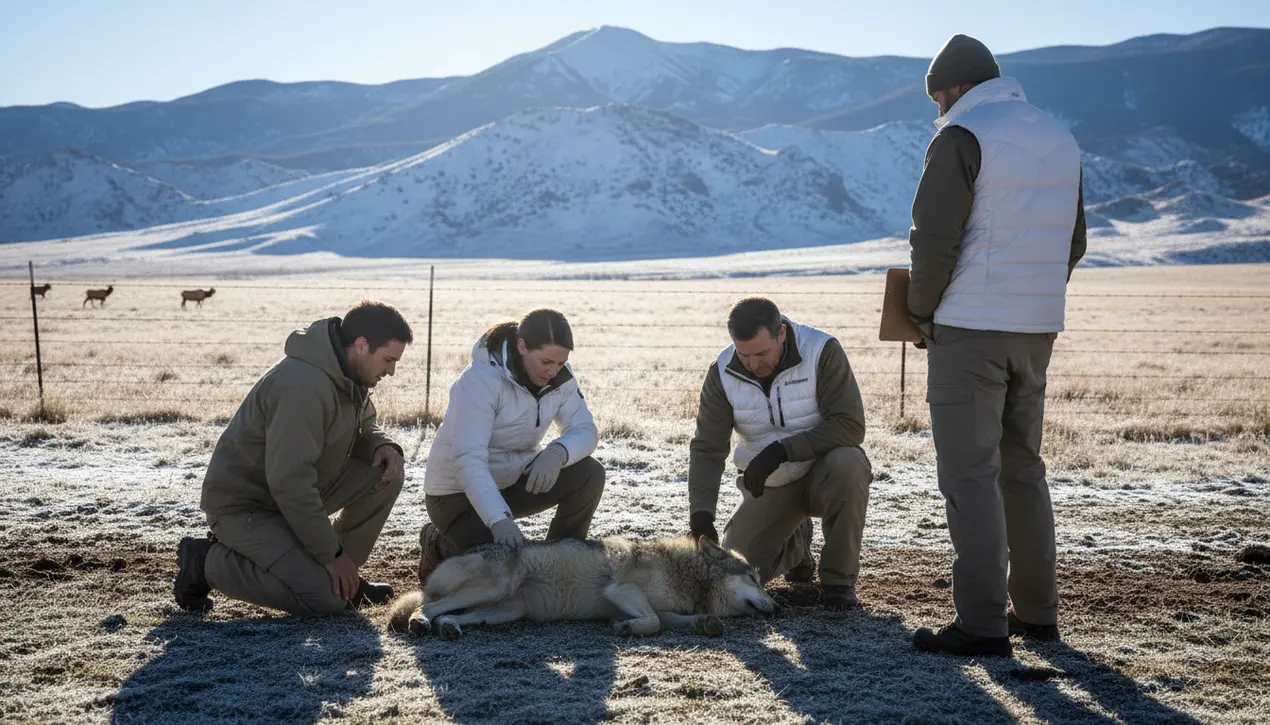
SciencebiologyEvolution and Ecology
Colorado wolf reintroduction faces challenges as some animals die.
RA
Rachel Adams
21 hours ago7 min read4 comments
On a sun-drenched morning two years ago, a cluster of state officials gathered in the mountains of northwestern Colorado, their breath misting in the cold air before a row of large metal crates. To the small, watching crowd, they unlatched the doors one by one, and from each emerged a gray wolf—arguably the nation's most controversial and charismatic endangered species.This moment was monumental for conservation, a deliberate attempt to mend a thread torn from the ecological tapestry of the American West. Gray wolves, once ranging throughout much of the Lower 48, were systematically eradicated in a government-backed extermination campaign throughout the 19th and 20th centuries, with Colorado losing its last resident wolves by the 1940s.The landscape has felt their absence ever since, an imbalance echoing through overpopulated deer and elk herds that overgraze vegetation, spread disease, and increase vehicle collisions. In a historic act of ecological restoration, Colorado voters passed a ballot measure in 2020 to reintroduce them, a move driven not by nostalgia but by a scientific understanding of the wolf's role as an apex predator essential for maintaining healthy, biodiverse ecosystems.The program began earnestly: in the winter of 2023, officials released 10 wolves translocated from Oregon, followed by another 15 from Canada in January of this year, with Colorado Parks and Wildlife (CPW) aiming to establish a self-sustaining population of 30 to 50 animals over three to five years. Governor Jared Polis heralded the return of the wolf's howl to western Colorado for the first time in generations, a symbol of wilderness reclaimed.Yet, today, the program faces a sobering reality. Ten of the transplanted wolves are already dead, alongside one of their wild-born pups, revealing the profound challenges of restoring a top predator to a landscape irrevocably shaped by human activity.The causes of mortality read like a catalog of modern threats: one wolf was killed by another in a territorial dispute, two likely fell to mountain lions, one was struck by a vehicle, and another died tragically in a coyote trap. In a stark illustration of the human-wildlife conflict at the heart of the endeavor, officials were forced to lethally remove two wolves—one in Colorado and another that wandered into Wyoming—for preying on livestock.These deaths underscore a harsh truth articulated by Joanna Lambert, a wildlife ecologist at the University of Colorado Boulder: wolves face high natural mortality rates, but the human-altered landscape layers on additional, often fatal, pressures. CPW has implemented mitigation strategies, such as hiring 'range riders' to patrol ranchlands, yet these measures are imperfect shields in a state blanketed by private property.Compounding the tragedy of individual deaths is a logistical crisis: Colorado is struggling to find new wolves for the next phase of reintroduction. A recent federal interpretation has blocked the state from sourcing wolves from Canada, and Washington state, facing its own wolf population decline, has refused to export animals.Other states like Montana and Wyoming have previously declined to participate. This scarcity highlights the fragile, interconnected nature of conservation efforts across political boundaries.Despite these significant setbacks, there are glimmers of hope that speak to the resilience of nature. Trail camera footage released by CPW over the summer showed three wolf pups, all clumsy paws and playful nips, and the agency now confirms four litters in the state.This reproduction, as CPW's wolf conservation program manager Eric Odell stated, is the true key to success. The path to a restored wolf population in Colorado was never promised to be easy or linear; it is a long game, a decades-long experiment in coexistence.The current challenges—the dead wolves, the political hurdles, the financial overruns—are not necessarily indictments of the program itself, but rather a stark lesson in the immense difficulty of repairing a broken ecological link. It is a testament to the complexity of weaving a wild predator back into a world we dominate, a slow, painstaking, and often heartbreaking process of reconciliation with the natural world we once sought to conquer.
#wolf reintroduction
#Colorado
#conservation
#endangered species
#ecosystem restoration
#featured
Stay Informed. Act Smarter.
Get weekly highlights, major headlines, and expert insights — then put your knowledge to work in our live prediction markets.
Related News
Comments
Loading comments...
© 2025 Outpoll Service LTD. All rights reserved.